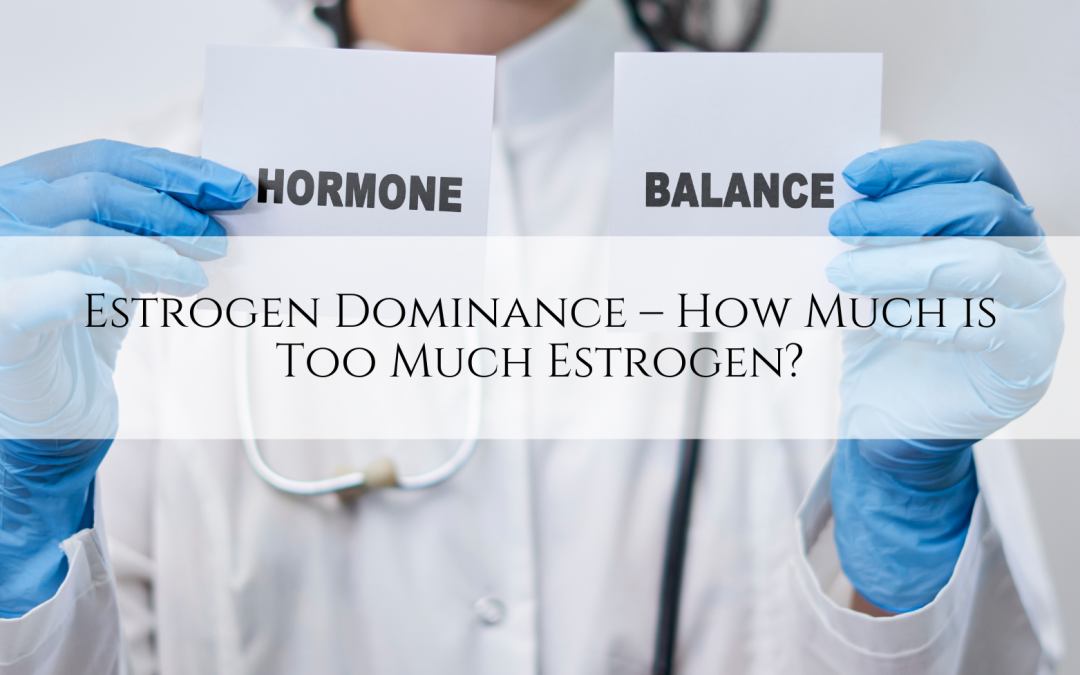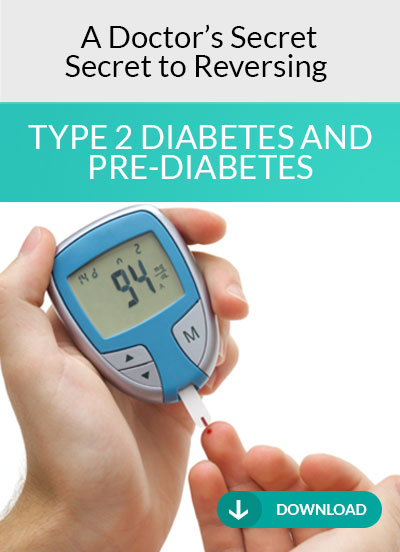What is Estrogen?
Estrogen is one of the sex hormones important in reproductive and sexual health in women and men. Estrogen, along with progesterone, regularly change over the course of a woman’s life during menstruation and menopause. When estrogen is produced in adequate amounts, it is generally of little to no concern. However, too much estrogen can be cause for concern and women, and even men, will often experience various symptoms of estrogen dominance. Additionally, because estrogen and progesterone should be in balance with each other, estrogen dominance can have an adverse effect on this delicate balance.
What Happens When You Have Too Much Estrogen?
As mentioned, the body should produce adequate amounts of estrogen. However, excess estrogen becomes inflammatory and is one of the nine root causes of autoimmune conditions that we address in our patients with autoimmunity. It should be noted that many of the other root causes of autoimmune conditions (leaky gut, insulin surges, toxins/chemicals, and adrenal fatigue) could also be the source of other issues seen in estrogen dominance. While estrogen is generally viewed through the lens of women’s health, the production of estrogen is also important for sexual health in men. When too much estrogen is produced, it can have an impact on both men and women in many ways, including:
- Brain health and clarity
- Cardiovascular health
- Hair, skin, and nails
- Infertility
- Menstrual cycle
- Metabolism
- Mood
- Sleep Disruptions
- Weight
Why Am I Making Too Much Estrogen?
There is no sole cause that leads to production of too much estrogen, rather there are many factors that can contribute to your body making too much estrogen. Hormones have a very important role in regulation and sending messages throughout the body. Any disruption or imbalance of one hormone can cause a ripple effect to the other hormones. Along with estrogen, progesterone and testosterone are also important in women’s health and men’s health. It is clear that hormonal imbalances can be a source of too much estrogen being produced in the body, but many interrelated factors can lead to excess estrogen.
Women’s Health Issues Can Trigger Estrogen Dominance
Some women’s health conditions are thought to be due to estrogen imbalance and they also promote more estrogen imbalance. It becomes a vicious cycle of inflammation, hormone imbalance, and illness.
Endometriosis is a common source of estrogen dominance. It is a chronic inflammatory disease, affecting approximately 10-15% of women. Uterine fibroids and polycystic ovary syndrome (PCOS) are common indicators of a woman’s body producing too much estrogen, leading to estrogen dominance. In endometriosis, fibroids, and PCOS, it is sometimes difficult to differentiate if they are the cause of too much estrogen or the consequence of too much estrogen. That’s why we use a comprehensive functional medicine approach to addressing not only hormone balance, but other key areas of health that can impact estrogen balance.
Low Testosterone Can Cause Estrogen Dominance
Women have lower testosterone levels in comparison to estrogen and progesterone levels. If a woman has excessively low testosterone, it could mean that testosterone is not being converted to estrogen properly. This can cause too much estrogen production, leading to estrogen dominance.
Symptoms of estrogen dominance due to low testosterone include:
- Thinning hair
- Fatigue
- Low libido
Low testosterone is not just a problem for women. Men can have low testosterone as a result of too much estrogen, causing:
- Infertility
- Erectile dysfunction
Stress Can Promote Too Much Estrogen
Chronic stress impacts us in so many ways and disrupts various systems in our bodies. When we are under chronic stress, we use more cortisol. Cortisol production pulls (or “steals”) from progesterone, leading to an imbalance of progesterone and estrogen. Stress can lead to too much cortisol and imbalances of estrogen in the body.
Insulin Resistance Can Worsen Estrogen Dominance
Cortisol helps keep blood sugar stable and is therefore effected by issues such as insulin resistance. Progesterone is used as the hormone precursor for cortisol production and can get “used up” when the body is under stress and the demand for cortisol is high. When progesterone is depleted, it is the perfect state for estrogen dominance to occur.
Detoxification and Chemical Exposures Can Increase Estrogen
Poor detoxification and gut issues can also lead to production of too much estrogen. Estrogen and other hormones must be removed from the body on a regular basis with the help of the liver and the gut. If detox pathways and gut issues are present, it may be difficult to properly metabolize and clear estrogen. A buildup of estrogen in the body can be harmful and even increase the risk of breast cancer or other female cancers.
Exposure to chemicals can mimic estrogen and impact estrogen levels. These are known as endocrine disruptors. Common sources of chemicals that can impact estrogen levels might include:
- Plastics that contain BPA
- Personal care products that contain phthalates
Estrogen Dominance Symptoms
Estrogen dominance may be difficult to pinpoint to one specific symptom, but you may experience multiple symptoms including:
- Brain fog
- Breast tenderness
- Dry skin
- Erectile dysfunction
- Fatigue
- Headaches
- Infertility
- Irregular periods
- Joint issues/problems
- Low libido
- Vaginal dryness
- Weight gain (specifically in the lower body, hips, thighs, breast tissue)
How Do I Know If I Have Too Much Estrogen?
There are many causes and symptoms of estrogen dominance and measuring estrogen levels is a great starting point to determine the best way to correct estrogen dominance and the underlying causes. Estrogen levels can be measured in blood, saliva, and urine; each providing a different snapshot of estrogen levels.
- Blood testing is a good indicator of how much estrogen your body is producing. Most blood tests measure the form of estrogen known as estradiol, but may also test for estrone and estriol to evaluate hormone levels, depending on your symptoms.
- Saliva testing measures the amount of active estrogen in the tissues and is also helpful to measure other hormones, such as progesterone. Saliva also makes it possible to measure hormones over a specific time frame, such as a menstrual cycle, to provide a look at patterns of several hormones over time. Saliva testing may be particularly helpful in assessing stress hormones such as cortisol.
- Urine testing indicates how well your body is breaking down estrogen, which can be helpful in determining if the estrogens in your body are safe or potentially harmful. The 2:16 ratio, associated with cancer risk, is also a valuable measurement captured via urine testing.
As you can see, there are multiple ways to measure how much estrogen is present in your body. We can help determine the best test for you based on your symptoms, your history, and an analysis of the root causes.
Estrogen Dominance Treatment: A Functional Medicine Approach
The good news is that estrogen dominance can be treated and symptoms can be improved. Once a root cause has been identified and testing has been done to get a more precise look at estrogen levels, there are several options to address symptoms and shift estrogen back to optimal levels. Treating estrogen dominance may include:
- Addressing hormone imbalances with diindolylmethane (DIM), progesterone, and other treatments to rebalance hormones.
- Reducing stress by taking an assessment of underlying stressors and supporting adrenals.
- Addressing and supporting gut issues such as dysbiosis, which may be impacting clearance of estrogen.
- Supporting detox pathways with calcium-D-glucarate and other supplements to help support the liver and clearing of estrogen.
- Avoiding and reducing use of environmental toxins such as BPA and phthalates.
- Identifying lifestyle and dietary habits that may influence weight and contribute to the production of too much estrogen. Increasing cruciferous vegetables and anti-inflammatory foods into your diet may be helpful.
- Incorporating regular exercise to maintain optimal weight.
Estrogen dominance has many causes and symptoms, navigating both and trying to figure out how to feel better can be challenging and frustrating to do on your own. There are many reasons estrogen dominance may be happening and many ways to reduce and balance estrogen levels. Our office is here to help.
We’ll help you get to the root of what is causing excess estrogen production, help you feel better, and determine the best course of treatment. You don’t have to do this alone, contact us for a complimentary 15-minute discovery consultation and we can get you on the road to feeling better.
Board Certified in Integrative Medicine
Certified Functional Medicine Practitioner
Institute for Functional Medicine Certified Practitioner






